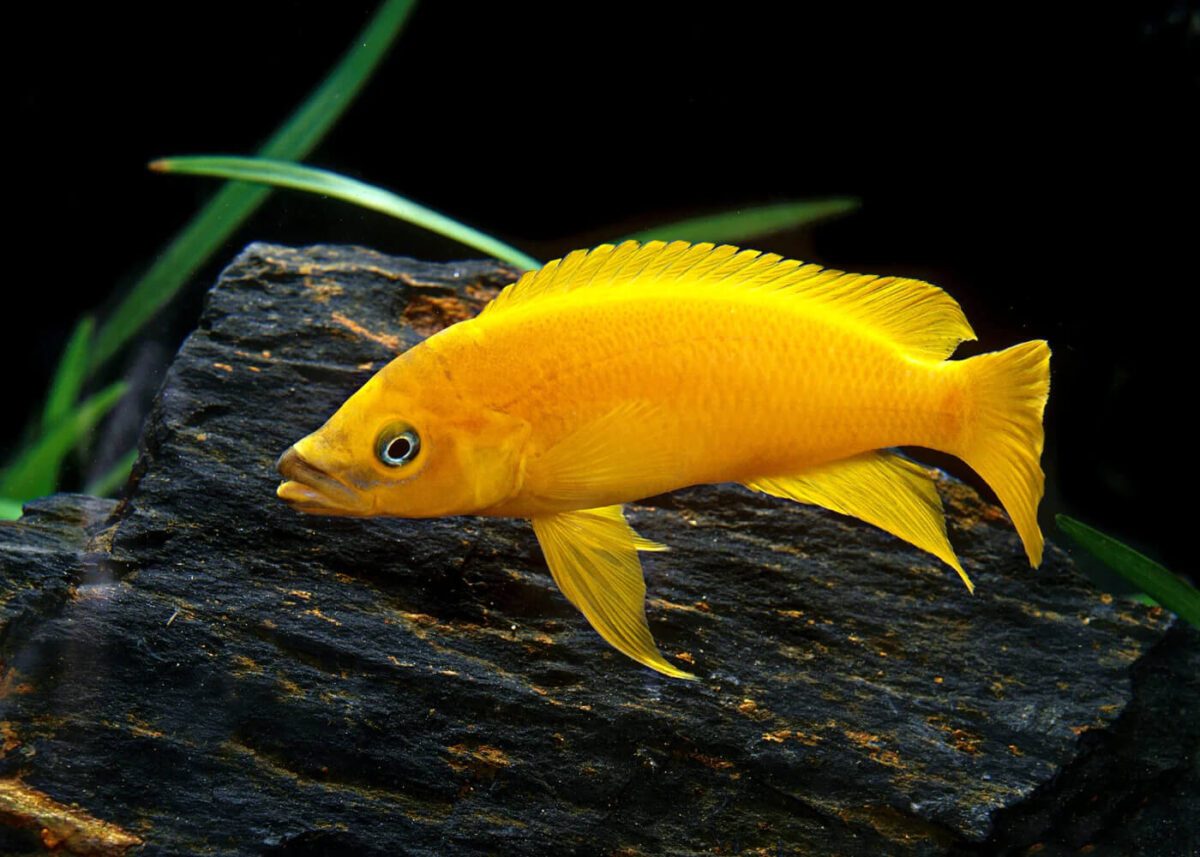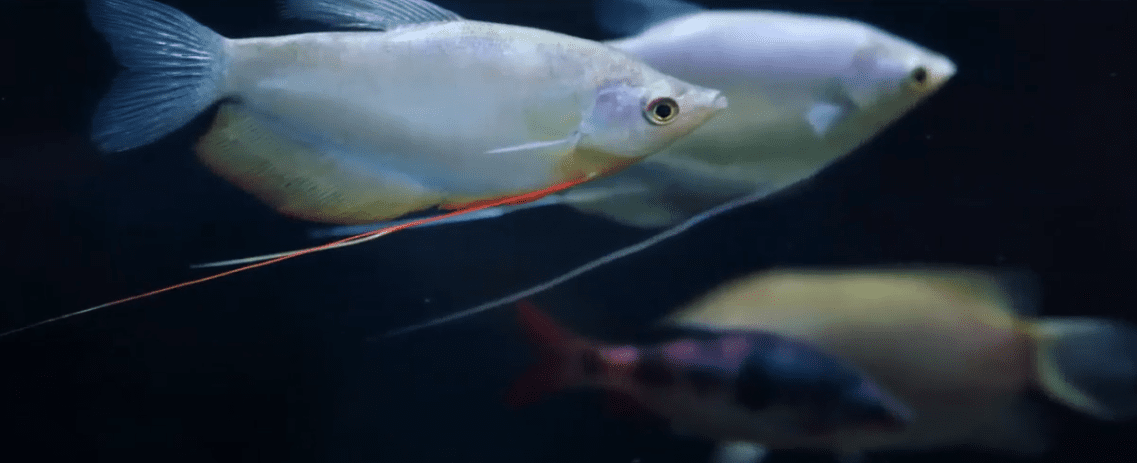Diving into the world of freshwater aquariums introduces hobbyists to many vibrant species, but few captivate the imagination, like the Neolamprologus leleupi. Known affectionately as the Lemon Cichlid, this striking inhabitant of Lake Tanganyika’s rocky depths brings a splash of sunlit yellow to the underwater garden.
With its vivid colouration and intriguing behaviours, Neolamprologus leleupi stands as a testament to the exotic beauty that freshwater aquascaping has to offer. Originating from one of Africa’s ancient lakes, this species carries the mystique of evolutionary history, having adapted to thrive in the unique conditions of its home waters.
The allure of keeping Neolamprologus leleupi extends beyond its aesthetic appeal, offering aquarists a fascinating glimpse into the complex social structures and breeding behaviours that define cichlids.
However, the journey of caring for these radiant creatures is paved with both rewards and challenges. It requires dedication to recreate a slice of Lake Tanganyika in the confines of a glass tank, from achieving the perfect water chemistry to designing an environment that caters to their instincts.
Yet, for those willing to embark on this journey, the Neolamprologus leleupi promises a visual treat and a rewarding experience that deepens one’s connection to the natural world, making every effort worthwhile in pursuing aquatic perfection.
Key Takeaways
- Habitat Requirements: Neolamprologus leleupi thrives in a tank that mimics the rocky environment of Lake Tanganyika, with plenty of hiding spots and a sandy substrate.
- Diet and Nutrition: A balanced diet including live, frozen, and high-quality flake foods is crucial for maintaining their vibrant colour and health.
- Breeding Behavior: They are relatively easy to breed in captivity, preferring to lay eggs in caves or under rocks. Providing a stress-free environment is vital to successful breeding.
- Social and Territorial Nature: While generally peaceful with species of a similar size and temperament, they can be territorial, especially during breeding. Adequate space and proper tank mates are essential.
- Water Conditions: Maintaining the correct pH, temperature, and water hardness is critical for their health. Regular water changes and monitoring are recommended to prevent common diseases.
Introduction
Overview of Neolamprologus Leleupi
Neolamprologus leleupi, commonly known as the Lemon Cichlid, is a vibrant freshwater fish native to the rocky shores of Lake Tanganyika in Africa. This species is renowned for its striking yellow or orange colouration, which adds a splash of colour to any aquarium.
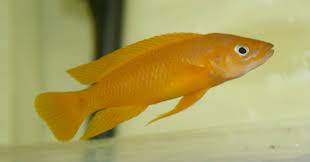
Adult Lemon Cichlids typically reach up to 4 inches long, making them manageable for most aquariums. They belong to the Cichlidae family, known for its diverse and behaviorally complex species.
Neolamprologus leleupi has a somewhat elongated body and is territorial, especially during breeding season.
Neolamprologus Leleupi Importance in the Aquarium Hobby
Neolamprologus leleupi holds a special place in the aquarium hobby for several reasons. Firstly, it’s vivid colouration and unique appearance make it a favourite among aquarists looking to add visual appeal to their tanks.
Its relatively easy care requirements and moderate size make it accessible to novice and experienced fish keepers. This species is also of interest to those who specialize in biotope aquariums, aiming to replicate the natural habitat of Lake Tanganyika.
Furthermore, the behaviour and breeding habits of the Lemon Cichlid offer enthusiasts a fascinating glimpse into the complex social structures of cichlid fish.
As a result, Neolamprologus leleupi not only enhances the aesthetic value of aquariums but also provides educational value, making it a cherished species in the hobby.
Understanding Neolamprologus Leleupi
Scientific and Common Names
The Neolamprologus leleupi, commonly known as the Lemon Cichlid, is a vibrant species in the Cichlidae family. This species is celebrated for its striking yellow or orange colouration, making it a standout in any aquarium.
| Characteristic | Description |
|---|---|
| Scientific Name | Neolamprologus leleupi |
| Common Names | Lemon Cichlid, Leleupi |
| Origin | Lake Tanganyika, Africa |
| Family | Cichlidae |
| Social | Territorial |
| Domain in Tank | Bottom to mid-water layers |
| Minimum Tank Size | 30 gallons (113 liters) |
| Diet | Omnivorous (prefers live and frozen foods) |
| Breeding | Substrate spawner, relatively easy to breed in captivity |
| Care Level | Moderate |
| pH Range | 7.8 – 9.0 |
| Water Hardness | 10-20 dGH |
| Temperature | 72-79°F (22-26°C) |
| Common Diseases | Ich, Bloat (preventable with good water quality and diet) |
| Life Span | 8-10 years |
| Size | Up to 4 inches (10 cm) |
| Best Tank Mates | Other Tanganyikan cichlids, avoid small or overly aggressive species |
Natural habitat and origin
Origin: The Lemon Cichlid originates from Lake Tanganyika in East Africa, one of the world’s oldest and deepest freshwater lakes. This lake is renowned for its unique biodiversity, hosting hundreds of cichlid species.
Habitat: In the wild, Neolamprologus leleupi prefers the rocky substrates of Lake Tanganyika. They thrive in the crevices and caves formed by the rocks, which provide shelter and breeding grounds. The water in their natural habitat is alkaline with a pH ranging from 7.8 to 9.0, and temperatures typically hover between 72-79°F (22-26°C).
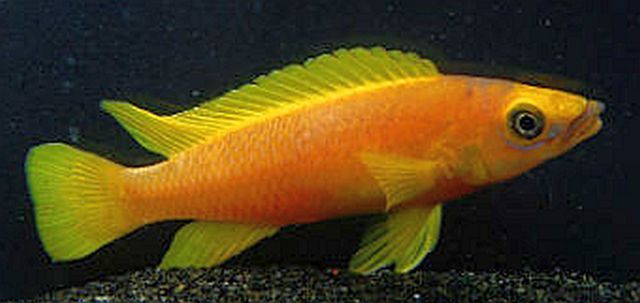
The lake’s unique environment has shaped the behaviour and requirements of the Lemon Cichlid, making them a fascinating species for aquarists.
Their adaptation to the specific conditions of Lake Tanganyika necessitates a well-thought-out aquarium setup that mimics their natural habitat as closely as possible. This includes providing a sandy substrate, plenty of rocks and caves for hiding, and maintaining the water conditions to match the alkaline waters of their home lake.
Understanding the natural habitat and origin of Neolamprologus leleupi is crucial for anyone looking to keep these beautiful cichlids healthy and vibrant in a home aquarium.
Aquarium Setup for Neolamprologus Leleupi
Creating the right environment for Neolamprologus leleupi is crucial for their health and well-being. Here’s how to set up an ideal aquarium for them:
Recommended tank size
A minimum of 30 gallons is recommended for Neolamprologus leleupi. This size provides adequate space for their territorial nature and allows for proper water quality management. For breeding or keeping multiple individuals, a larger tank is necessary to prevent aggression and ensure each fish has enough territory.
Ideal water conditions (pH, temperature, hardness)
- pH: The water should have a pH between 7.8 and 9.0, mimicking their natural Lake Tanganyika habitat.
- Temperature: Maintain water temperatures between 72-79°F (22-26°C). Consistent temperatures within this range promote healthy metabolism and breeding behaviours.
- Hardness: Water hardness should be between 10-20 dGH, reflecting the mineral-rich waters of their native environment.
Substrate and decoration suggestions for a Lake Tanganyika biotope
- Substrate: Use fine sand as the substrate to replicate the lake’s bottom. It’s gentle on the fish, allowing them to exhibit natural behaviours such as digging.
- Rocks: Arrange rocks to create caves and crevices. Leleupi uses these for hiding, breeding, and establishing territories. Ensure the structures are stable to prevent accidents.
- Plants: While not abundant in their natural habitat, hardy plants that can tolerate high pH and hardness, such as Anubias or Java Fern, can be added. Attach them to rocks or driftwood.
- Driftwood: Although less common in Lake Tanganyika, small pieces of driftwood can add aesthetic value without significantly affecting water parameters.
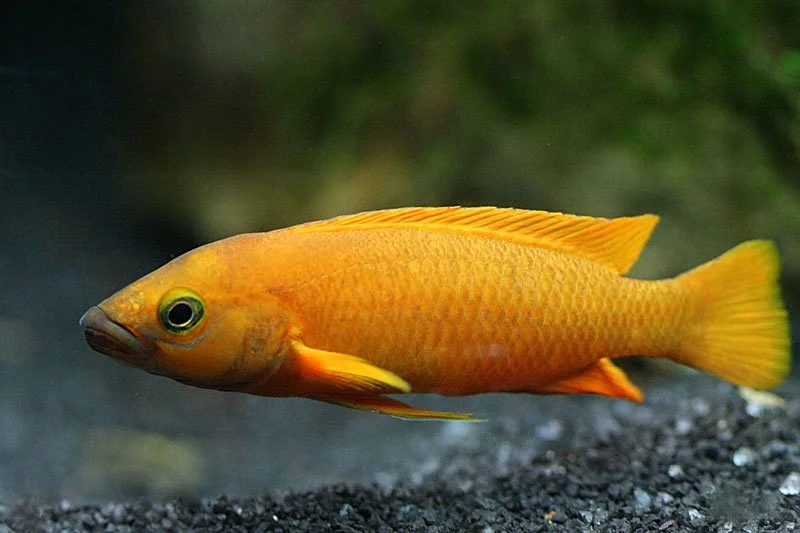
Setting up an aquarium that closely resembles Neolamprologus leleupi’s natural habitat ensures their health and encourages natural behaviour and breeding, creating a more engaging and rewarding experience for the aquarist.
Diet and Nutrition
Overview of Neolamprologus leleupi diet
Neolamprologus leleupi, commonly known as the Lemon Cichlid, is an omnivorous species native to the rocky substrates of Lake Tanganyika in Africa. In the wild, their diet consists of small invertebrates, crustaceans, and algae. Mimicking this natural diet in the aquarium setting is crucial to ensure their health and vibrant colouration.
Feeding schedule and dietary recommendations
For optimal health, Neolamprologus leleupi should be fed twice a day. The key is to provide only as much food as they can consume within a couple of minutes to avoid overfeeding and the subsequent water quality issues that can arise from uneaten food.
Dietary Recommendations
- Live and Frozen Foods: Incorporate various live and frozen foods into their diet, such as brine shrimp, daphnia, and bloodworms. These foods are not only nutritious but also stimulate natural foraging behaviours.
- High-quality Pellets and Flakes: Use high-quality cichlid pellets and flakes specifically formulated for African cichlids. These foods are designed to meet their nutritional needs and support their immune system.
- Vegetable Matter: Since they are omnivorous, including some vegetable matter in their diet is beneficial. Offer blanched vegetables like spinach, zucchini, and peas occasionally to provide essential vitamins and minerals.
- Supplements: Consider adding vitamin and mineral supplements to their diet, especially if you notice any signs of deficiencies. However, this should be done cautiously to avoid over-supplementation.
By providing a balanced diet that closely resembles their natural feeding habits, you can ensure the health, longevity, and colour vibrancy of your Neolamprologus leleupi.
Behavior and Compatibility
Social behaviour and territoriality
Neolamprologus leleupi, known for its vibrant colour and dynamic presence, exhibits a complex social structure and marked territoriality, especially during the breeding season. In the wild, they stake out territories within the rocky substrates of Lake Tanganyika, a behaviour that is also observed in aquarium settings.
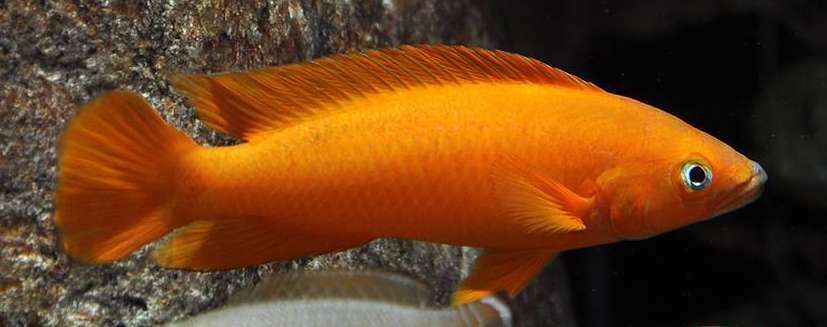
While generally peaceful towards fish of different species, they can become aggressive towards their kind or similarly sized and shaped fish, particularly in confined spaces. To mitigate aggression, provide ample hiding spots and visual barriers with rocks and caves that mimic their natural habitat.
Best tank mates from Lake Tanganyika
The best tank mates for Neolamprologus leleupi are typically other species from Lake Tanganyika that do not compete for the same territory or food resources. Suitable companions include:
- Cyprichromis species: Peaceful, open-water swimmers occupying the tank’s upper levels.
- Julidochromis and Lamprologus species: Rock-dwelling cichlids that also enjoy the rocky landscapes but generally do not intrude on the lineup’s territory.
- Tropheus species: Herbivorous cichlids that focus on different dietary needs, reducing competition.
Avoiding common compatibility issues
To prevent compatibility issues, avoid housing Neolamprologus leleupi with overly aggressive or much larger species, as they may bully or prey on the leleupi. Similarly, the lineup’s territorial behaviour might stress tiny, timid fish.
Ensuring a spacious tank with plenty of hiding places can help minimize stress and aggression. Maintaining a group of leleupi can also dilute aggression if the tank is large enough to support multiple territories.
Monitoring fish interactions closely, especially in newly established tanks, is crucial to identifying and mitigating potential compatibility issues early on.
Breeding Neolamprologus Leleupi
Breeding Neolamprologus leleupi, a captivating species from Lake Tanganyika, can be a rewarding experience for aquarists. Understanding their breeding conditions, behaviour during egg-laying, and parental care is crucial for success.
Breeding conditions and triggers
Neolamprologus leleupi prefers specific water conditions for breeding: a pH range of 7.8 to 9.0, temperatures between 72-79°F (22-26°C), and water hardness of 10-20 dGH. A key trigger for breeding is providing a stable and stress-free environment. This includes a tank with plenty of hiding spots and caves, mimicking their natural habitat. A well-balanced diet rich in proteins can also encourage spawning behaviour.
Egg-laying and parental care
Leleupi typically chooses caves or crevices for laying eggs. The female lays a small clutch of eggs, which the male fertilizes. Both parents may participate in guarding the nest, but often, the female takes a more active role in egg care, including fanning the eggs to prevent fungal growth and removing unfertilized eggs.
Tips for raising fry
Successfully raising leleupi fry involves a few key practices:
- Separation: Consider moving the fry to a separate tank to prevent predation by other tank inhabitants and to control water quality more efficiently.
- Feeding: Initially, feed the fry with infusoria or commercially available food. Transition them to finely crushed flakes or baby brine shrimp as they grow.
- Water Quality: Maintain pristine water conditions in the fry tank, with regular, small water changes to avoid shocking the delicate fry.
Aquarists can enjoy the fascinating process of breeding and raising Neolamprologus leleupi by providing the right conditions and dedicated care, adding a vibrant touch to their aquatic community.
Health and Diseases
Common diseases affecting Neolamprologus leleupi
Ichthyophthirius Multifiliis (Ich): Manifests as white spots on the skin, fins, and gills. It’s highly contagious and can be fatal if not treated promptly.
Bloat: This condition is characterized by a swollen abdomen, loss of appetite, and difficulty swimming. It’s often caused by poor diet or water quality.
Fin Rot: Bacterial infection leading to frayed or disintegrating fins. Poor water conditions often exacerbate this issue.
Preventative care and treatment options
Water Quality: Maintain optimal water conditions by performing regular water changes and monitoring pH, temperature, and hardness. Neolamprologus leleupi thrives in water with a pH of 7.8 to 9.0, temperatures between 72-79°F (22-26°C), and hardness of 10-20 dGH.
Quarantine New Arrivals: Always quarantine new fish for at least 2-3 weeks to prevent the introduction of diseases to your established tank.
Balanced Diet: Provide a varied diet that includes high-quality pellets, frozen, and live foods to ensure proper nutrition and boost immunity.
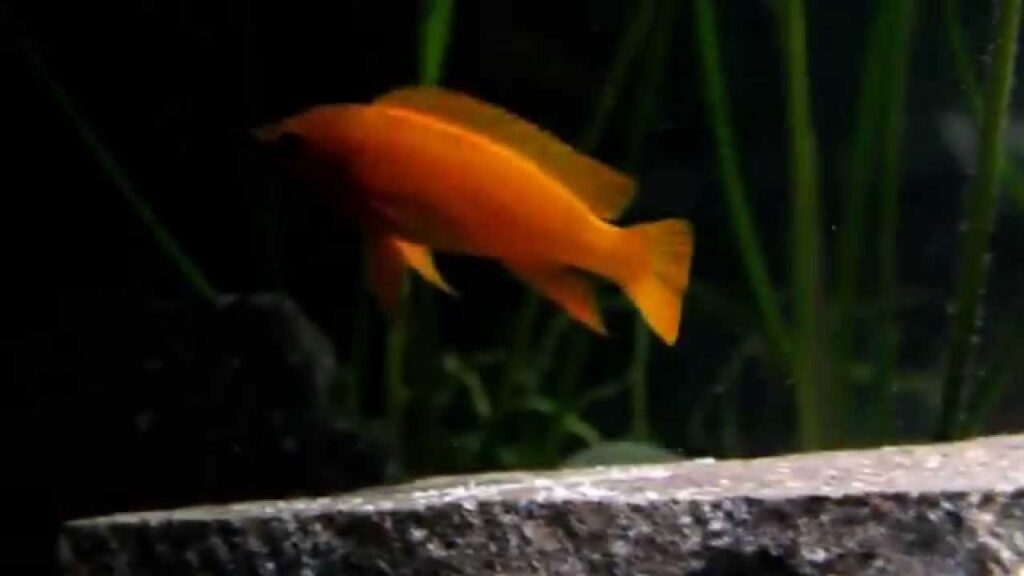
Treatment Options
Ich: Treat with over-the-counter medications specifically designed to eliminate Ich. Increasing the tank temperature to 86°F (30°C) for a few days can also help speed up the parasite’s lifecycle, making medication more effective.
Bloat: Treatment involves improving water quality and possibly administering antibiotics if the condition is bacterial. Feeding easily digestible foods like peas (without the shell) can help alleviate symptoms.
Fin Rot: Improve water conditions and treat with antibacterial fish medications. In severe cases, antibiotics may be necessary.
Creating a Tanganyikan Community Tank
Creating a Tanganyikan community tank is an exciting challenge that allows aquarists to replicate the unique ecosystem of Lake Tanganyika, one of the oldest and most biodiverse freshwater lakes in the world. Here’s how to approach this endeavour:
Principles of stocking a Tanganyikan aquarium
Biotope Accuracy: Aim to mimic the natural habitat of Lake Tanganyika by including rock formations, sandy substrates, and specific water parameters (pH 7.8-9.0, temperature 72-79°F, and hardness 10-20 dGH). This provides a stunning visual effect and supports the fish’s natural behaviour and health.
Species Selection: Choose species that naturally coexist in Lake Tanganyika. Please consider their zone preferences within the lake (e.g., pelagic, benthic, or littoral zones) to ensure compatibility and reduce territorial disputes.
Balanced Community: Include a mix of species that occupy different niches in the tank, such as shell-dwellers (e.g., Neolamprologus multifasciatus), rock dwellers (e.g., Julidochromis), and open-water swimmers (e.g., Cyprichromis). This diversity helps prevent competition for space and resources.
Compatible species for a community setup
Shell Dwellers and Rock Dwellers: These species are excellent for adding structure to the bottom of the tank. They are generally peaceful but will defend their territory.
Sardine Cichlids (Cyprichromis): These open-water swimmers add activity to the upper layers of the aquarium and are generally peaceful, making them great community members.
Tips for Maintaining a Balanced Ecosystem
Regular Monitoring: Keep an eye on water parameters and fish health. Lake Tanganyika species are sensitive to changes in water quality.
Appropriate Feeding: Provide a varied diet suitable for the different species in your tank, mimicking their natural diet as closely as possible.
Space and Hiding Spots: Ensure all species have enough hiding spots and territories to reduce stress and aggression. This can be achieved by strategically placing rocks, caves, and shells.
Summary
Optimal Tank Conditions: Ensure a minimum tank size of 30 gallons to provide ample space for these territorial fish. The tank should mimic their natural Lake Tanganyika habitat, with a sandy substrate, rocks, and caves for hiding and breeding.
Water Parameters: Maintain water temperatures between 72-79°F (22-26°C), pH levels of 7.8 to 9.0, and water hardness of 10-20 dGH. Regular water changes are crucial to keep parameters stable.
Diet and Feeding: Offer a varied diet consisting of high-quality flake food and live and frozen foods such as brine shrimp and daphnia. This ensures their nutritional needs are met and enhances their vibrant colouration.
Breeding: Neolamprologus leleupi are substrate spawners and relatively easy to breed in the right conditions. Provide plenty of hiding spots and a stable environment to encourage breeding behaviour.
The Joy and Challenges of Keeping Neolamprologus Leleupi
The Joy:
- Vibrant Colors: Their striking yellow or orange colouration is a visual delight in any aquarium.
- Interesting Behavior: Observing their complex social interactions and breeding rituals adds depth to the hobbyist’s experience.
- Ease of Breeding: Their willingness to breed in captivity allows enthusiasts to witness the fascinating life cycle in their aquariums.
The Challenges:
- Territorial Nature: Managing their territorial behaviour requires careful planning in tank setup and selecting tank mates to prevent aggression.
- Specific Water Conditions: Mimicking the alkaline water conditions of Lake Tanganyika can be challenging, especially for beginners.
- Dietary Needs: Providing a varied diet to ensure health and colour vibrancy necessitates a commitment to regular feeding routines and food variety.
Successfully keeping Neolamprologus leleupi offers a rewarding experience, blending the beauty and complexity of Lake Tanganyika’s ecosystem with the satisfaction of overcoming the challenges inherent in maintaining these captivating fish.

